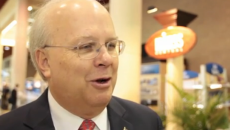Health Information Exchange (HIE)
GOP strategist Karl Rove recalls a personal encounter with the power of healthcare IT. Mike Miliard asks Rove what role the government should play in reform, and whether the Bush administration could have infused $27B in stimulus funds.
Paul Wilder of the New York eHealth Collaborative discusses interoperability and the role of meaningful use Stage 2, which he says has helped more than Stage 1.
After McKesson, Cerner, Allscripts, Greenway and athenahealth made news at HIMSS13 with the launch of the CommonWell Health Alliance, Healthcare IT News spoke with McKesson CEO John Hammergren about the road ahead. Joining Hammergren in the discussion were David McCallie and Arien Malec.
Interoperability was one of the most talked about topics throughout 2013 HIMSS Annual Conference and Exhibition this past week. Before heading to New Orleans for the event, Healthcare IT News asked ONC chief Farzad Mostashari, MD, for his take on interoperability, and what it would take to achieve it sooner rather than later.
Interoperability and exchange are perhaps the most frequently spoken words at this year's HIMSS13 conference. Yet they are only two among the many issues facing national coordinator Farzad Mostashari, MD, this week.
A raft of technologies including broadband, cloud computing, cheaper storage and mobile devices, among others, is driving the transformation. At the same time, market expectations regarding standards of care are changing, as are younger providers' relationship with health-specific IT.
Clinician-to-clinician Direct messaging is now available across New York as part of the Statewide Health Information Network of New York. Albany Medical Center, one of the busiest trauma centers in Upstate New York, will be the state's first provider using the Direct service, which integrates into providers' electronic health record systems.
Two new surveys find big variations in physician use of health information exchange. While many large practices are thinking about analytics, patient tracking and performance data for ACOs, some smaller practices were unaware of their state-based HIEs or the Direct Project.
When asked what a powerful health information exchange (HIE) is built upon, one might immediately think of computer accounts, files upon files of paper medical reports converted into megabytes, laptop, screens and data synapses sparking the air between them.
One thing I've learned in the government is that words matter, and sometimes, particularly in complicated or technical areas, it can be hard to use words that are precise and accurate.

